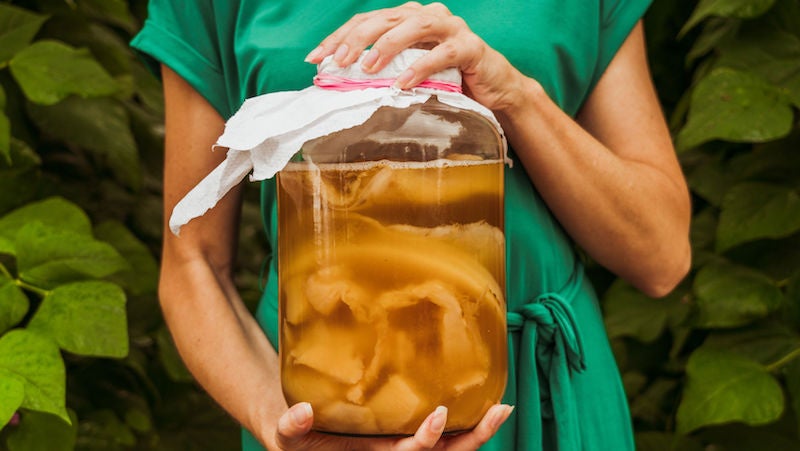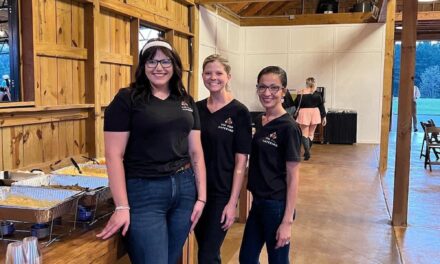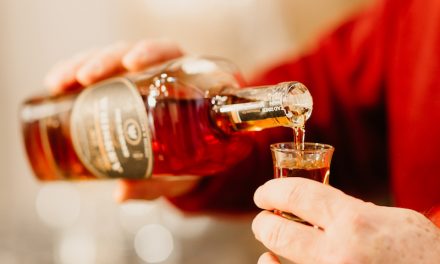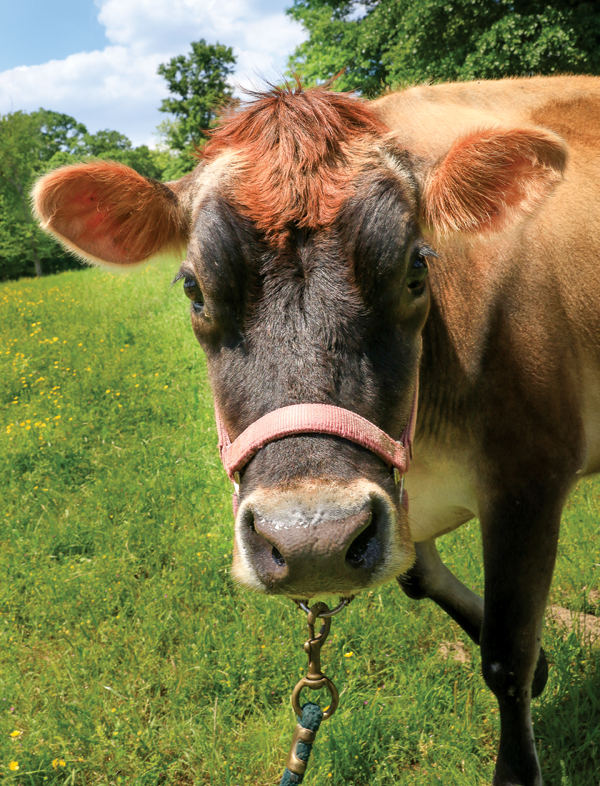By Madoline Markham
Photos by Kathryn Bell
It was a rainy summer afternoon when I found myself holding a large jar with a mysterious looking substance encased in a pinkish liquid. Its name, I learned, was SCOBY. And while it was not the alien creature that I had thought it might be, it was living, and it was a mother of sorts.
SCOBY (symbiotic culture of bacteria and yeast) is the rubbery home of bacteria and yeast that transforms tea into the fermented and slightly effervescent beverage that is kombucha, bringing many probiotics to life along with it.
When Shelby County Extension Coordinator April Stone first saw a SCOBY in a jar her office kitchen, she asked, “What did y’all marinate that chicken in?”
The end product might have made her wince the first time she sipped it earlier this year, but drinking it has since become a daily habit for her. “We have Type II diabetes in my family, so why not be proactive (with it) in addiction to exercise and eating well?” April says.
And she’s not alone. Kombucha is one of the fastest-growing grocery segments in the past decade, according to Market Watch Magazine. In the Extension office in Columbiana, though, their team is encouraging people to drink it an even lower-sugar way—by making it yourself (see the sidebar on a Fermentation Workshop they are planning in July).
And Angela Treadaway will be happy to explain to you how to do it too. Thirty-four years into her tenure working with the Extension office, she started researching kombucha, and in the two years since she says drinking it has helped significantly with the aches and pains that come along with age.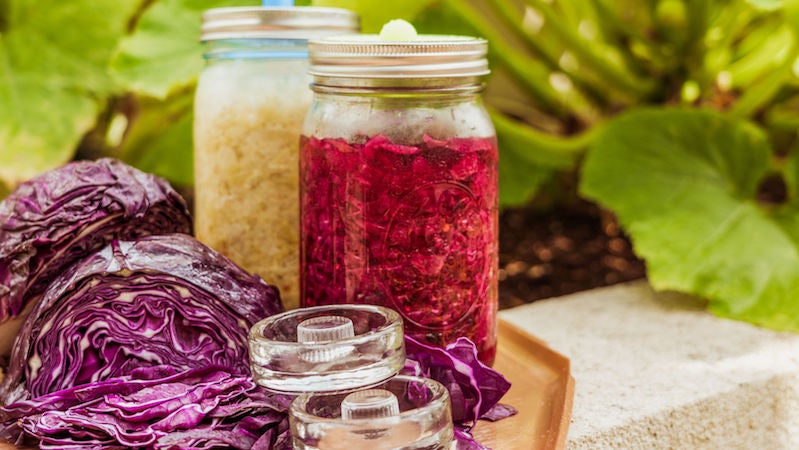
Angela has long taught pressure canning, water bath canning, pickling and fermenting through the Extension’s food preservation program, but it’s only recently that she and those who come to her classes have been quite so interested in the fermenting segment of things. In 2020 all of their classes were especially popular too with so many people at home and able to do more gardening and new things with produce on their hands.
Much like a sourdough bread starter, she’s shared her SCOBY “hotel” that acts like a mother to “birth” new SCOBYs and regularly puts it to work too. To start the process, she adds the fermented tea from the SCOBY jar to purified water and sugar, heats it in the microwave, and then adds green or black tea bags. Next comes a time of waiting, and more waiting—about seven days in all. But before go time, it must be tested so you know if it’s ready. “You don’t want it to taste sweet, you want to have a bite and taste vinegary to show it’s ready,” Angela explains.
The fermentation practices Angela promotes don’t end with kombucha either. She adds kefir grains to pasteurized (but not ultra-pasteurized) organic milk to create kefir, which she likens to buttermilk, in a fermentation process that is much like cheese is made.
Angela is also a fan of making sauerkrauts with live cultures and the health benefits they bring too. In the jars she showed us, one had purple cabbage, another green cabbage with kale and carrots, and still another green cabbage with dill and red pepper plates. To get its live cultures started, she adds 3 tablespoons of salt without iodine to every 5 pounds of cabbage she chops, massages it until it starts to “weep,” and then places it in a jar with a weight on top as well as a fermentation lid that allows it to breathe so pressure doesn’t build up. The end result is a condiment begging to be slathered on a Rueben sandwich—or any food of your choosing.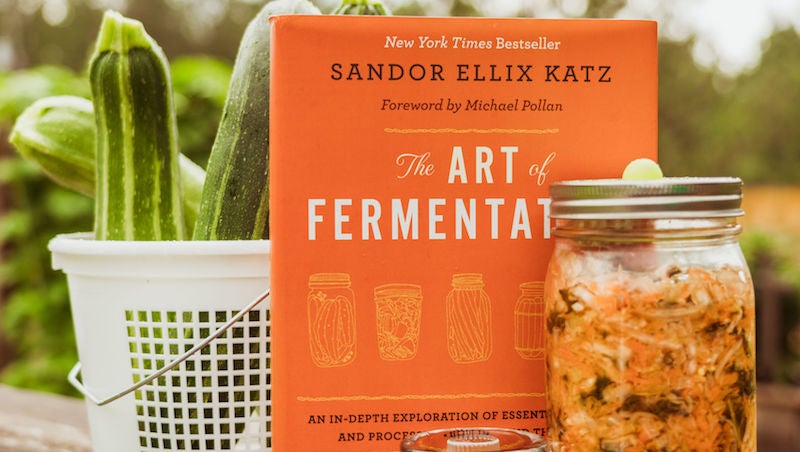
To recap what happens in that process with a bit more science, vegetables ferment when the natural bacteria in the them breaks down the components of the vegetables into forms that are easier to digest and often more nutritious than the raw vegetable itself. You can also ferment veggies like radishes, turnips, parsnips, cucumbers (resulting in a pickle with extra health benefits), okra, string beans and green tomatoes.
Angela is quick to point out all she has learned her fermentation research too, particularly how one author’s husband saw both toenail fungus and cataracts that went away once he started drinking kombucha. “There’s something to it,” she says.
So as I held that ugly alien-looking creature in the jar in my hands that summer afternoon—in the Soil and Water Conservation Educational Garden that part is Shelby County Soil and Water Conservation District and, most notably for this article, is located right outside the Extension office—I thought I just make fermentation part of my life too.
Fermentation Workshop with Sandor Ellix Katz
- July 22
- 5-7 p.m.
- via Zoom
- Register at aces.edu/go/fermentationwithsandor
Sandor Ellix Katz aka “Sandorkraut” has been fermenting since 1993 and is out to demystify home fermentation by teaching workshops as a “fermentation revivalist.” Newsweek called his book Wild Fermentation “the fermenting bible,” and he’s since written two more books, Revolution Will Not Be Microwaved and The Art of Fermentation.
What is the Extension?
First of all its full name is the Alabama Cooperative Extension System, and it is the primary outreach and engagement organization of our state’s land grant universities, Alabama A&M and Auburn, in cooperation with Tuskegee University. What does that look like? It provides research-based educational programs in agriculture and forestry, building on its agriculture roots, but it also can connect with anyone in the community through its programs in family and consumer sciences, economic and community development, 4-H and urban affairs.
In particular Angela Treadaway and the Shelby County Food Safety, Preparation, and Preservation Team offer programs for food service workers, food processors and consumers to help ensure we have adequate food supplies safe from foodborne illness. As a part of that she teaches classes on food safety for restaurants and on the cottage food law for home-based businesses that make baked goods, jams and jellies, and other products that don’t have to be refrigerated.

